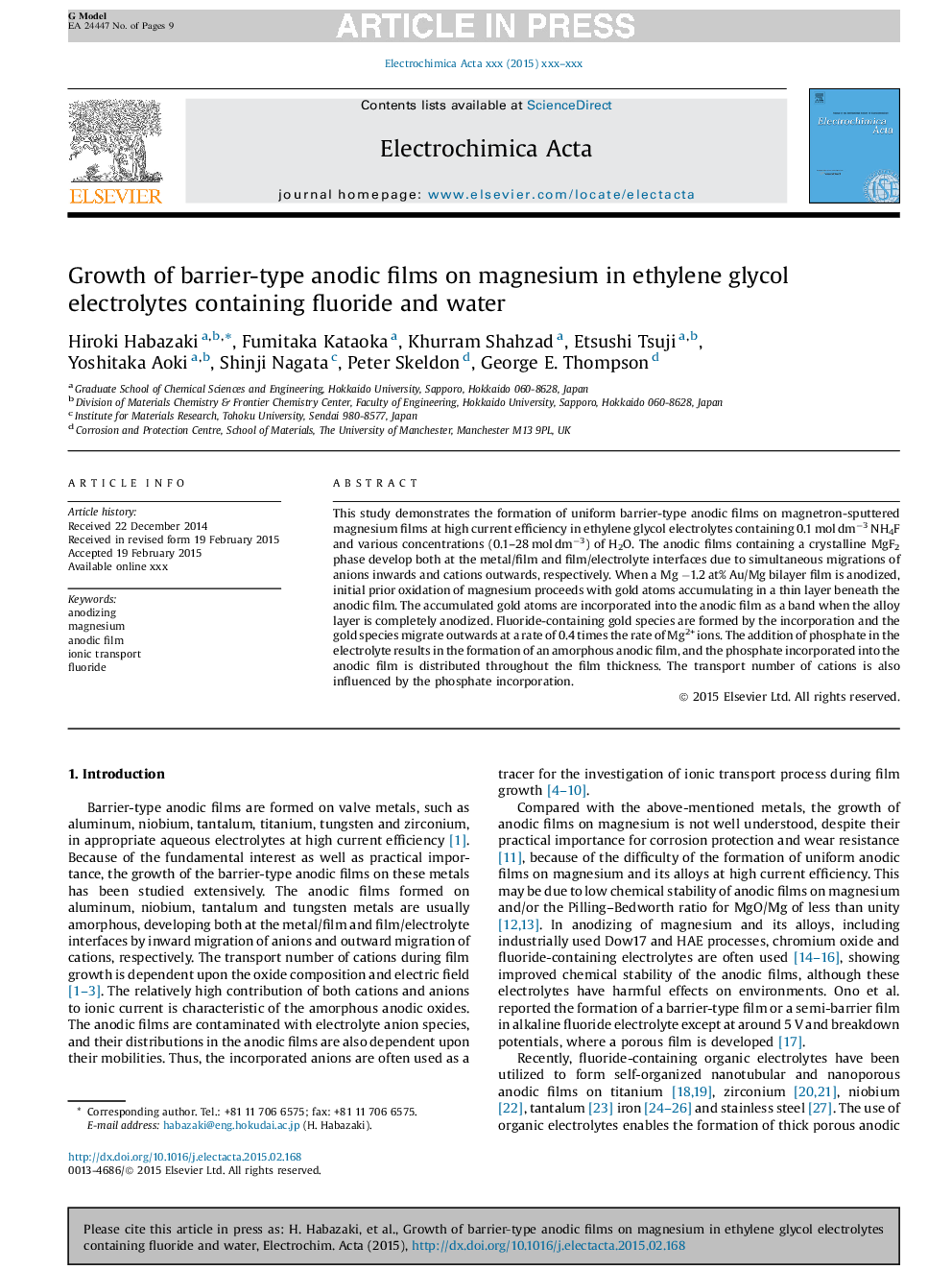| Article ID | Journal | Published Year | Pages | File Type |
|---|---|---|---|---|
| 6610699 | Electrochimica Acta | 2015 | 9 Pages |
Abstract
This study demonstrates the formation of uniform barrier-type anodic films on magnetron-sputtered magnesium films at high current efficiency in ethylene glycol electrolytes containing 0.1 mol dmâ3 NH4F and various concentrations (0.1-28 mol dmâ3) of H2O. The anodic films containing a crystalline MgF2 phase develop both at the metal/film and film/electrolyte interfaces due to simultaneous migrations of anions inwards and cations outwards, respectively. When a Mg â1.2 at% Au/Mg bilayer film is anodized, initial prior oxidation of magnesium proceeds with gold atoms accumulating in a thin layer beneath the anodic film. The accumulated gold atoms are incorporated into the anodic film as a band when the alloy layer is completely anodized. Fluoride-containing gold species are formed by the incorporation and the gold species migrate outwards at a rate of 0.4 times the rate of Mg2+ ions. The addition of phosphate in the electrolyte results in the formation of an amorphous anodic film, and the phosphate incorporated into the anodic film is distributed throughout the film thickness. The transport number of cations is also influenced by the phosphate incorporation.
Related Topics
Physical Sciences and Engineering
Chemical Engineering
Chemical Engineering (General)
Authors
Hiroki Habazaki, Fumitaka Kataoka, Khurram Shahzad, Etsushi Tsuji, Yoshitaka Aoki, Shinji Nagata, Peter Skeldon, George E. Thompson,
